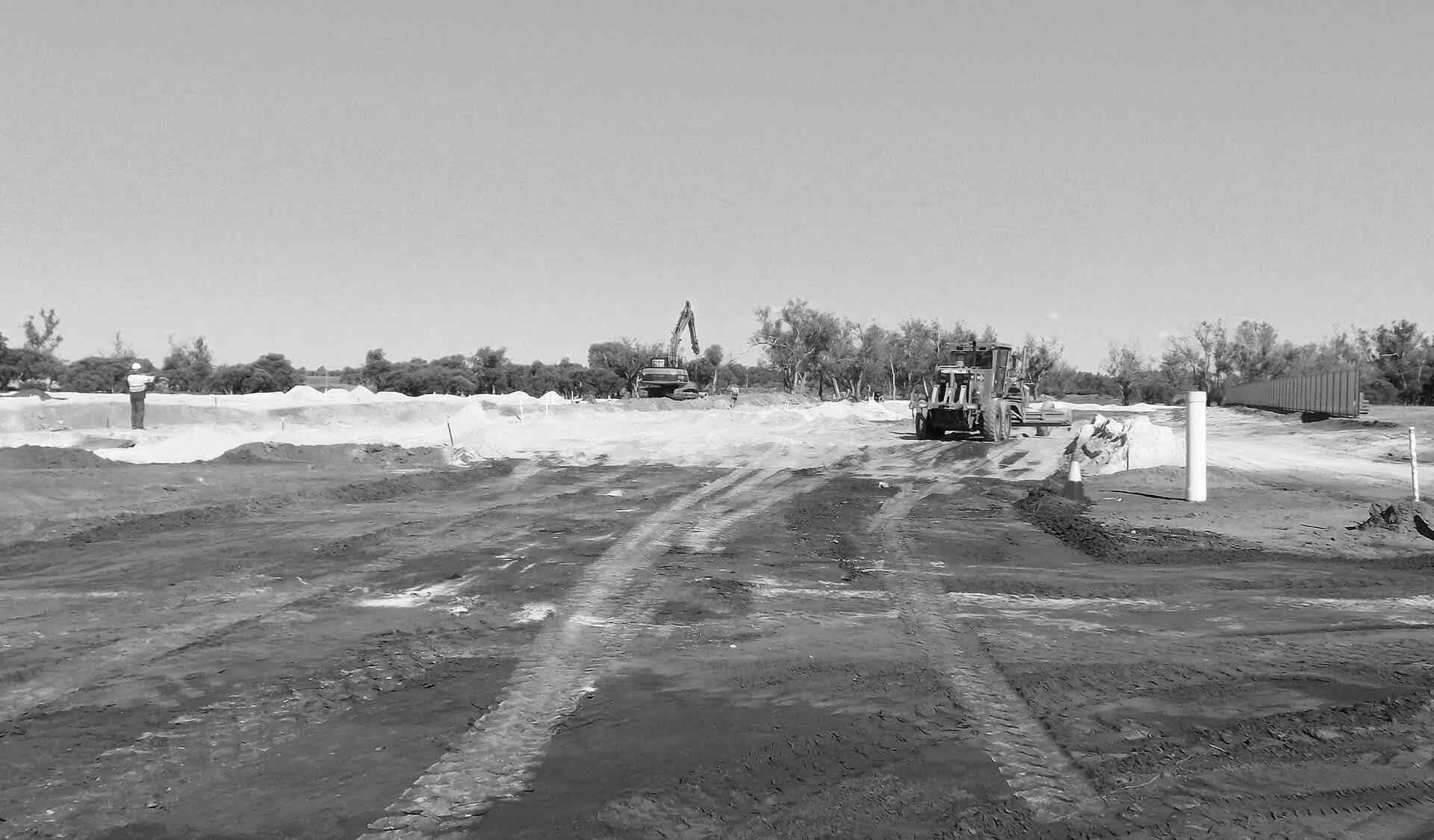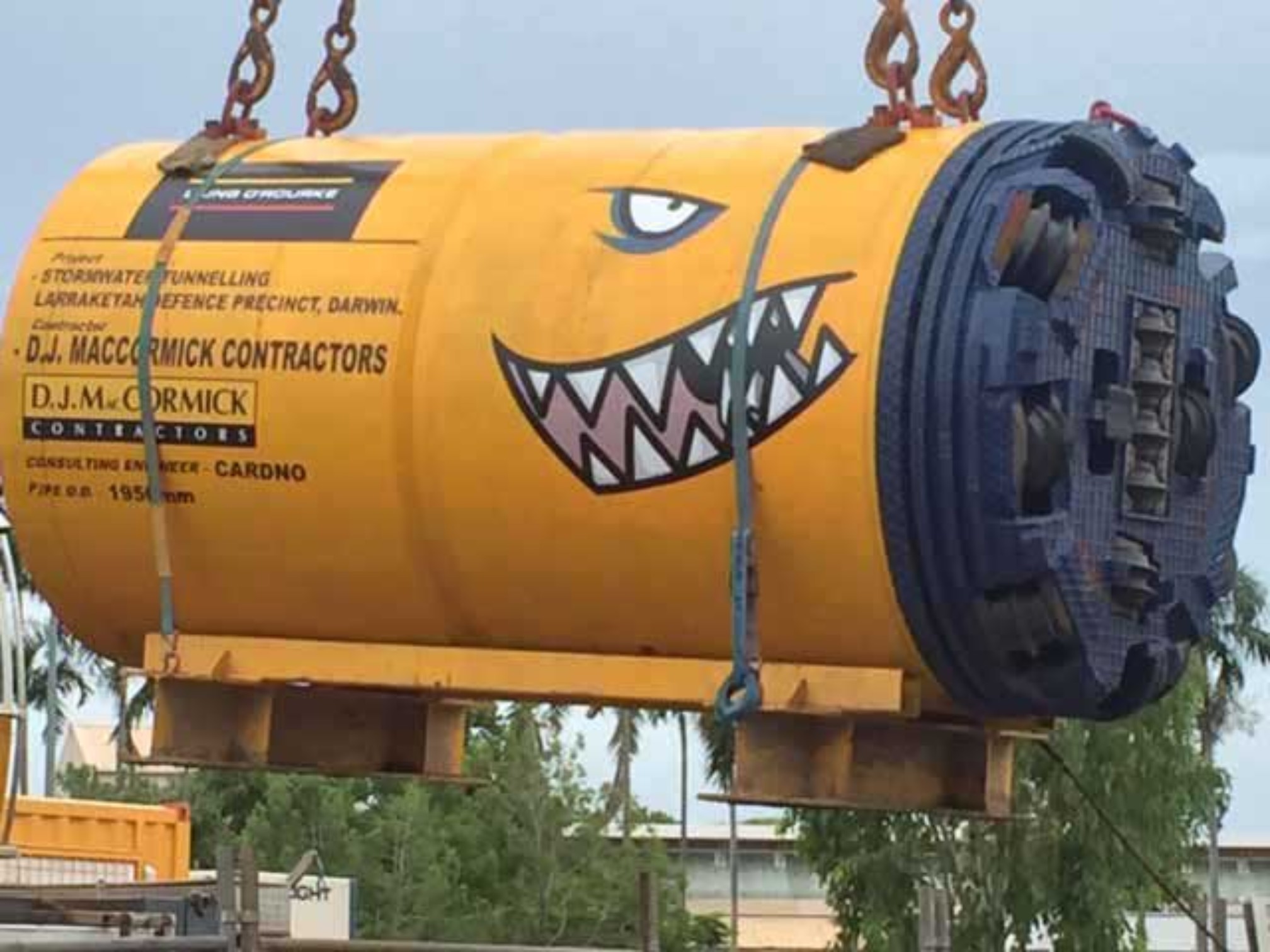
DJ MacCormick Contractors completes seven drives on Iron Bridge Project

DJ MacCormick Contractors has completed the twin crossings of Humes 1000 mm reinforced concrete jacking pipe in Port Hedland, Western Australia.
Tocomplete the project, DJ MacCormick Contractors utilised the Iseki closed face slurry shield microtunnelling system. Ground conditions on site were in wet clay and at depths that ranged from 4 m to 6 m cover.
Of the six 1000 mm drives completed, two drives of 46 m were completed under Utah Road with an additional two drives of 152 m under the BHP Rail also being completed. A further two drives of 80 m under the FMG Rail line were also undertaken. A seventh drive of 1800 mm was also completed 112.5 m under the BHP Rail, located nearby the Iron Bridge mine site.
The total distance tunnelled for the project was approximately 668.5 metres.
Equipped to tackle any and all challenges
The launch and receival shafts for all twin drives were designed so both drives could be undertaken via a singular shaft.
Temporary designs were undertaken to accommodate the two twin drives and were signed off by DJ MacCormick’s structural engineer, including designs for the Ground Support Systems (Australia) shoring design.
The two drives of 45 m, which were performed under Utah Road, were notable due to the road being the main arterial access to the Finucane Island Port and included the stakeholder Pilbara Port Authority. The two twin drives located below the BHP and FMG rails were also noteworthy due to the critical number of trains which cart iron ore to ports from various mine sites.
Additionally, a further drive was undertaken close to the Ironbridge mine site, which is located 110 km south of Port Hedland for a Humes 1800 mm reinforced concrete jacking pipe. The drive length was 112.5 m and a Herrenknecht AVN 1600 closed face slurry shield microtunnelling machine, equipped with an extension kit along with a rock cutting wheel, was used for the drive.
The rock in excess to 200 MPA and several rock cutter changes were required throughout the drive length. The system is designed to enable such changes from within the tunnel boring machine (TBM) given the diameter of the pipe is man-entry available.
All personnel on the project were experienced and trained in working at heights, in confined spaces, gas monitoring, tunnel entry and tunnel rescue in addition to being capable of utilising all safety equipment required for contingency situations.
The bentonite mix design was based on the clay and rock drives which were encountered on site and was established to ensure that the safe jacking loads of pipes was not exceeded. Following the completion of the drives, a separate grout mix design was used through the grout ports to provide a 5 MPA for any annulus between the outside of the envelope pipe and the surrounding surface. Grouting pressure was kept to less than one bar to ensure there was no heave at the surface.
 Tunnel Boring Machine breaking through.
Tunnel Boring Machine breaking through.
Seven successful drives, one happy client
All drives were completed with no settlement at surface, including at all rail crossings and road crossings.
The project involved a significant amount of pre-planning including risk assessment workshops, several management plans, inspection test plans and numerous safety workshops and on-site work based contingency demonstrations to ensure all personnel were ready if an emergency arose.
DJ MacCormick Contractors proudly delivered the microtunnelling scope with no safety incidents. The works were undertaken over a period of nine months. All vehicles were provided to mine specification requirements for the project including plant risk assessments.
The company appreciates the input from both MCP Kinetic and Iron Bridge in delivering this successful project.
DJ MacCormick management would also like to thank the efforts of their tunnelling and shaft construction crews for undertaking the works in professional manner without incident and ensuring all drives were completed successfully.
For more information visit DJ MacCormick Contractors.
Subscribe to Trenchless Australasia for the latest project and industry news.
This article appeared in the February edition of Trenchless Australasia. Access the digital copy of the magazine here.






.jpg)

